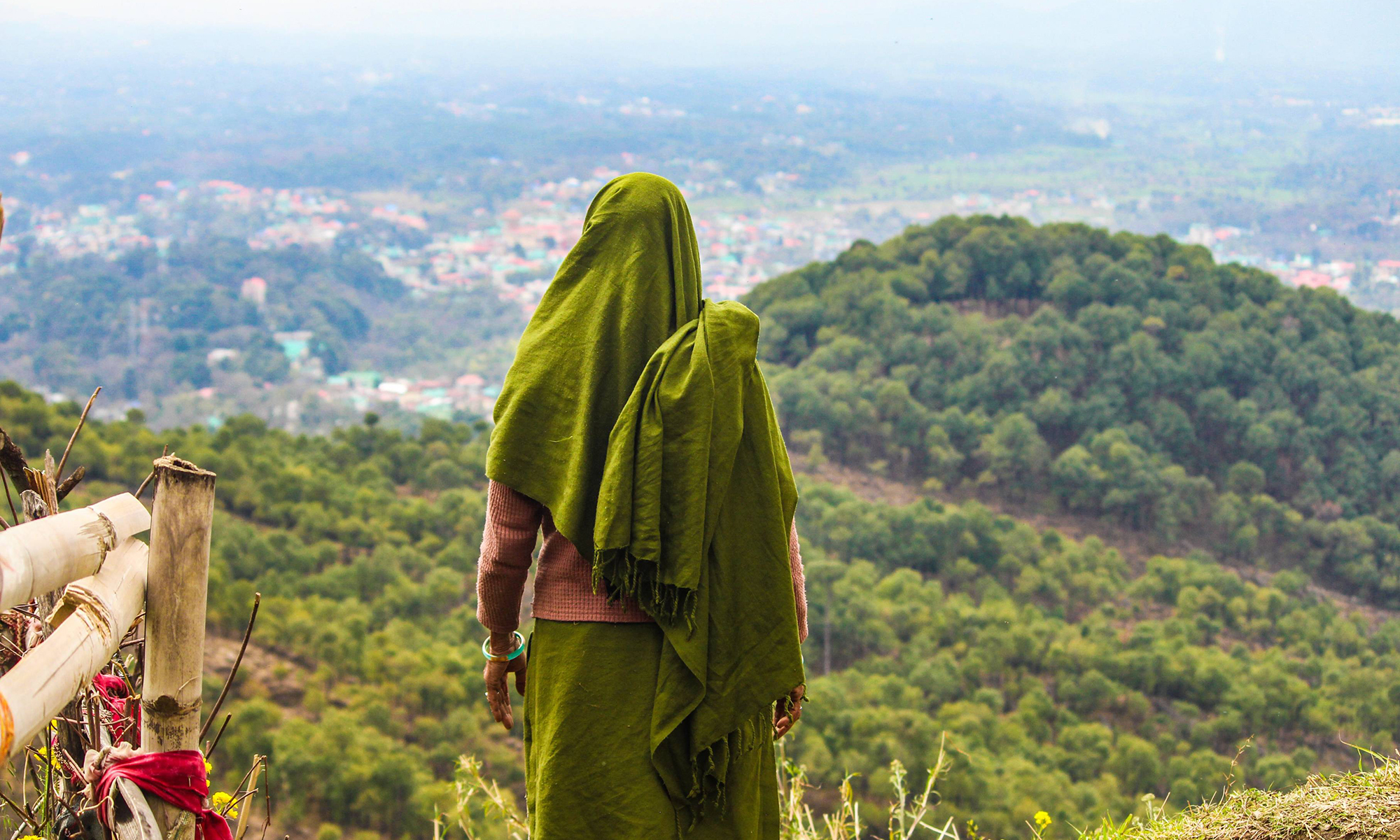24 Sep, 2024
Author: Tanbir Azmi, Communications and Knowledge Management Specialist, IGBP
 © GIZ India/Aashima Negi
© GIZ India/Aashima Negi
According to the Global Gender Gap Report 2024 published by the World Economic Forum, as of 2024, global progress towards gender equality stands at 68.5%, showing only a modest 0.1% increase from the previous year. Amidst this broader disparity, a significant topic that continues to gain attention is the 'eco-gender gap’. But what does this gap mean for environmental sustainability, and why should we care?
The eco-gender gap reflects the fact that women are more proactive in adopting eco-friendly behaviours, largely due to social roles, caregiving responsibilities, and their heightened exposure to environmental risks. In many communities, women are on the frontlines of climate impacts—facing water scarcity, deforestation, and extreme weather—making them more invested in sustainability. A Mintel survey found that 71% of women commit to ethical and sustainable living, compared to 59% of men. Women are also more likely to adopt greener choices, such as reducing meat consumption, using eco-friendly products, and embracing reusable items.
However, despite their leadership in sustainability, women face systemic barriers that limit their impact. In many regions, they have less access to land ownership, financial support, and decision-making roles in conservation. Traditional gender roles and economic disparities often restrict their ability to scale up sustainable practices. Addressing these challenges is essential for achieving both gender equality and more effective environmental solutions.
Women’s leadership in conservation has tangible benefits for environmental sustainability. When women have the resources and agency to drive change, ecosystems thrive, and communities benefit. Research shows that gender-inclusive conservation leads to better environmental outcomes. According to IUCN (2024) in "Gender Equality for Greener and Bluer Futures", women's participation in community forest management in India resulted in a 24% increase in controlling illicit grazing, a 28% rise in preventing illegal tree felling, and a 28% boost in forest regeneration. This demonstrates how empowering women in conservation strengthens environmental protection and resilience.
Here’s a closer look at how women are making an impact in our projects:
.jpg) © GIZ India /Pradnya Thombare
© GIZ India /Pradnya Thombare
Kausalya Devi, a 60-year-old farmer from Erode, Tamil Nadu, exemplifies the positive effects of women’s leadership in sustainable agriculture. Using intercropping and integrated pest management techniques, she improves biodiversity and reduces farming’s environmental footprint. By training other women, she is multiplying the benefits of sustainable farming. Learn more>>
.jpg) © GIZ India
© GIZ India
In Bhitarkanika, women are leading the transition from chemical to organic farming and using their farms as training centers for sustainable practices. In the Sundarbans, women are maintaining mangrove bio-shields, crucial for coastal protection. Women-led Self-Help Groups across India are innovating in wetland management, such as creating handicrafts from invasive water hyacinth, which helps manage wetland ecosystems while providing economic benefits. Learn more>>
.jpg) © GIZ India/Aashima Negi
© GIZ India/Aashima Negi
In Himachal Pradesh, women-led enterprises promote sustainable forest management. Artisans like Hansa use pine needles to create eco-friendly products, reducing fire risks and supporting forest health. Despite challenges like the COVID-19 pandemic, these initiatives highlight the economic and environmental advantages of empowering women in forest conservation. Learn more >>
When both men and women are equally involved, we can expect better results. Women’s eco-friendly actions, such as recycling and reducing plastic use, already benefit the environment. If everyone adopts these habits, regardless of gender, we can make a larger impact on reducing pollution and conserving resources. Furthermore, having diverse perspectives from both genders allows us to address environmental problems from multiple angles, leading to more effective and innovative solutions.
In many cultures, including India, eco-friendliness is often perceived as a “feminine” trait, which can discourage men from participating in environmental activities. For example, recycling and reducing plastic use are sometimes viewed as feminine behaviours, leading men to avoid these actions to align with traditional masculine identities. Challenging these stereotypes is essential for fostering gender-neutral conservation efforts and encouraging broader participation in environmental sustainability.
While our biodiversity projects predominantly involve working with all genders. we recognise the importance of addressing the eco-gender gap to enhance the effectiveness of our initiatives. In line with the Global Biodiversity Framework, we aim to ensure that resources, training, and opportunities are accessible to all genders and are developing outreach programs to better engage underrepresented groups. We also seek to challenge cultural stereotypes that link environmentalism predominantly with femininity, encouraging broader participation in conservation efforts. While recognising that the eco-gender gap reflects wider gender inequalities, we believe that addressing this issue can contribute to more inclusive and effective biodiversity projects. Bridging this gap is an important step towards advancing both gender equity and sustainability.
We would like to hear from you. Write to us by clicking on the feedback button on top.
© 2014 IGBP. All Rights Reserved.
Site By: Virtualpages
